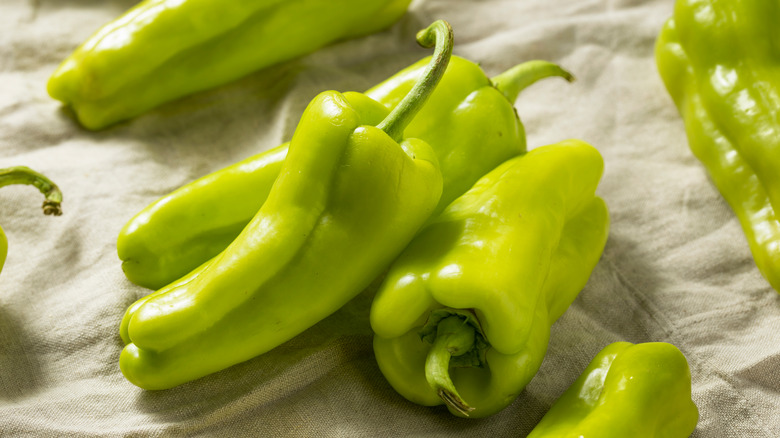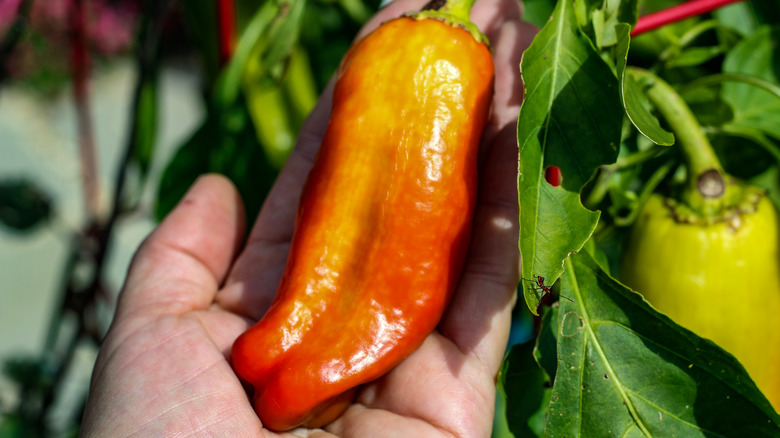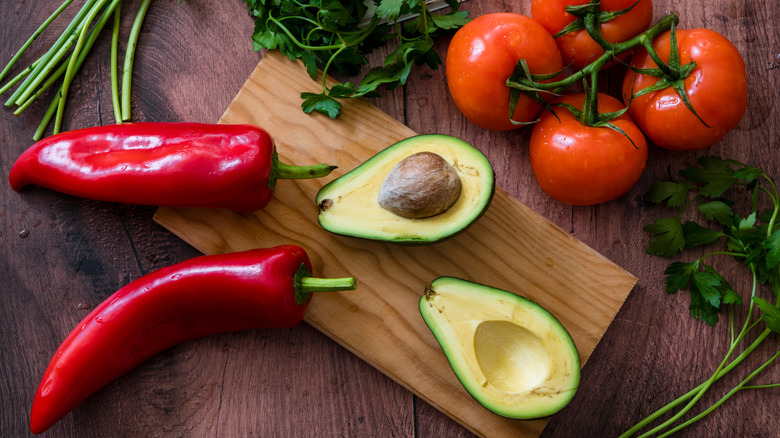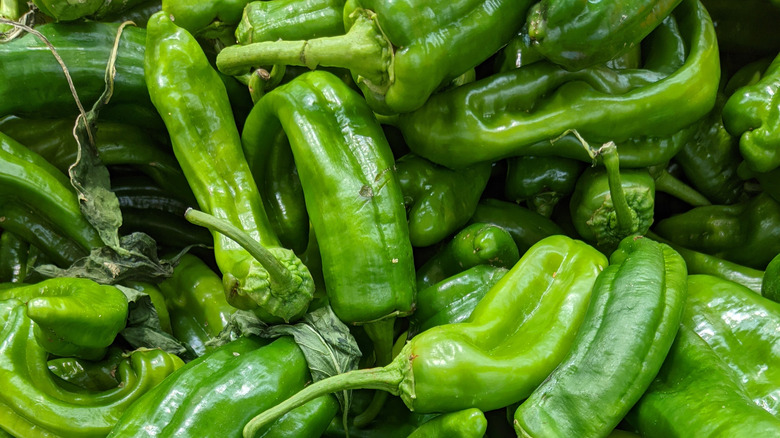What Are Cubanelle Peppers And What Do They Taste Like?
There's something so refreshing about the crisp crunch of a fresh pepper. That is, as long as you're not biting into a ghost pepper or a habanero.
Thrillist reports that roughly 50,000 pepper varieties are grown worldwide. With that, it feels impossible to recognize them all. Peppers are one of the more unique foods, since each one varies tremendously in its flavor and spice factor. Peppers can range from sweet and tangy to powerfully hot, such as the Caroline reaper — one of the hottest peppers in the world, per PepperHead.com.
While some peppers are more widely known, such as the jalapeño or bell varieties, others fly under the radar and are more popular in certain types of cooking rather than for everyday sweetness or spice. Take the Cubanelle pepper (Capsicum annum Cubanelle) — it's a sweet to mildly spiced variety that appears in Latin American and Italian cuisines. But what does it taste like, and how is it used?
What is a Cubanelle pepper?
Though it's formally known as a Cubanelle, this sweet variety has earned the nickname of "Italian frying pepper," according to Chili Pepper Madness, because it's commonly cooked with oil in a frying pan and eaten in that manner. The pepper originated in Italy, but over the years, it has become more popular in Latin American cuisine than Italian. Pepper Scale reports that today, most Cubanelles are imported from Dominican Republic.
These peppers are relatively long and narrow, averaging up to 6 inches long and 2 inches wide. While they can have a touch of heat, most of these Italian frying peppers fall at fewer than 1,000 Scoville units (a serrano, for comparison, averages around 10,000 units, per The Seattle Times).
Cubanelles should not be ripe when they're picked; Chili Pepper Madness reports that these peppers are usually picked unripened, when they're still yellow-green. They can be used when fully ripe, but they'll be deep orange or red. The Cubanelle's flavor is similar to that of an Anaheim or banana pepper, according to HowStuffWorks.
How to cook with Cubanelle peppers
Cubanelles fall into the sweet pepper category, but they sometimes have mild heat. This flavor palate helps them play an important role in Latin American cooking, according to Pepper Scale; specifically, they're common in Cuba, Puerto Rico, and Dominican Republic. The pepper is also used in certain sofrito recipes — a mixture that varies by location but typically consists of onions, garlic, and peppers.
Cubanelles can be fried in oil and eaten whole, but they also work well sliced and added as a sandwich topping or as the perfect addition to pizza (either fried or raw). They're commonly stuffed, too, with ingredients such as chorizo and cheese, then baked similarly to stuffed bell peppers. Cubanelles do have thinner skin than poblanos or bell peppers, which Chili Pepper Madness says makes them great for stuffing and baking, since they require less cook time than the other two alternatives. Plus, their sweet heat gives them a good flavor balance in tandem with their filling.
Are Cubanelle peppers healthy, and where can you buy them?
Since Cubanelle peppers are fruits, they're naturally loaded with healthy nutrients. They share a similar nutritional profile with other sweet peppers, such as bell peppers, according to Bonnie Life. The website reports that Cubanelle peppers are an excellent source of vitamin C and vitamin A, as well as vitamin B6.
Nutritionix says that Cubanelle peppers have no fat; plus, one pepper contains only 20 calories. And with 4 grams of carbohydrates, these peppers are perfect as a light and healthy snack.
Those looking to experience these sweet peppers are in luck; they're becoming more popular in grocery stores around the country. They're available in stores such as Walmart, according to the retail giant's website, as well as grocery delivery services like Instacart. And for those who want to grow them, the process is similar to growing bell peppers. Gardening Know How reports that Cubanelle seeds should be started indoors four weeks before the first frost, then transferred outdoors after frosts are over. Give them full sun and a moderate amount of water, and they will be ready to pick within about 75 days.



